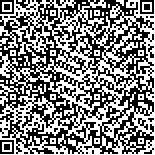| 摘要: |
| 近年来,面向黄河口的监测需求日益增大,如黄河入海流路改道至清水沟路以来,在新老河道的交汇处存在着丰富的地物类别,对于这些地物类别的检测识别研究有助于掌握生态环境状态,对于黄河口的湿地保护以及国家改善环境的战略支持具有重要意义。因此,本文提出一种新的湿地高光谱图像分类方法,分双路分别提取图像的空谱特征并融合分类。光谱维采用分组预处理的双向长短期记忆网络(Bi-LSTM)有效学习光谱特征;空间维采用注意力加强的多尺度卷积网络有效增强所提取的空谱特征,使得分类结果更具准确性。本文实验应用覆盖黄河入海口新老河道交界处的成像光谱仪(Compact High Resolution Imaging Spectrometer,CHRIS)所采集的数据和黄河三角洲自然保护区滨海湿地高分5号传感器(GF-5)所采集的高光谱图像开展。结果表明:分组与双向长短期记忆网络(Bi-LSTM)的有效结合显著提升了网络性能,同其他监督分类方法相比提升约3%~8%,此外注意力机制的加入同比增加约3%,在使用1%的极少训练集下数据集CHRIS和GF-5的总体分类精度分别达到92.3%和86.11%。 |
| 关键词: 高光谱图像分类 黄河三角洲 分组 多尺度 注意力机制 |
| DOI:10.11759/hykx20220429013 |
| 分类号: |
| 基金项目:山东省联合基金项目(U1906217);国家自然科学基金项目(62071491) |
|
| Combined Bi-LSTM and attention enhancement multiscale convolution for wetland hyperspectral image classification in the Yellow River Delta |
|
XU Mei-lun1, LI Zhong-wei1, WANG Lei-quan2, LI Juan2, HU Ya-bin3, LIANG Jian4
|
|
1.College of Oceanography and Spatial Information, China University of Petroleum(East China), Qingdao 266580, China;2.College of Computer Science and Technology, China University of Petroleum(East China), Qingdao 266580, China;3.Ministry of Natural Resources, First Institute of Oceanography, Qingdao 266061, China;4.Nantong Intelligent Perception Research Institute, Nantong 226007, China
|
| Abstract: |
| Recently, the demand for monitoring the Yellow River estuary has gradually increased. For example, there are various types of ground objects at the intersection of the old and new rivers since the flow of the Yellow River into the sea was diverted to Qingshuigou. Thus, the detection and recognition of these ground objects can provide insights into the state of the ecological environment for the protection of wetlands at the Yellow River estuary. Therefore, in this paper, a new classification method for wetland hyperspectral images is proposed. The proposed method can be categorized into spectral and spatial dimensions to extract the empty spectral features of the images and fuse them for classification. In the spectral dimension, a bidirectional long- and short-term memory network (Bi-LSTM) with packet preprocessing was used to determine spectral features efficiently. In the spatial dimension, an attention-enhanced multiscale convolution network was used to effectively enhance the extracted empty spectrum features and further improve the accuracy of classification results. In this paper, the experimental application was conducted based on data from a compact high-resolution imaging spectrometer (CHRIS) covering the junction of old and new rivers at the estuary of the Yellow River and the hyperspectral images collected using the Gaofen-5 sensor (GF-5) in the coastal wetland of the Yellow River Delta Nature Reserve. Our results show that the effective combination of grouping and Bi-LSTM significantly improved the network performance by ~3%–8% compared with other supervised classification methods, and the addition of an attention mechanism increased by ~3% compared with the previous year. Under the minimal training set of 1%, the CHRIS and GF-5 datasets reached overall classification accuracy of 92.3% and 86.11%, respectively. |
| Key words: hyperspectral image classification Yellow River Delta grouping multiscale attentional mechanism |
